Welcome to the picturesque landscapes of Colorado, a state renowned for its diverse wildlife and awe-inspiring natural beauty. Among its many inhabitants, a group of birds stands out, captivating the hearts of birdwatchers and nature enthusiasts alike: the blue birds. These avian wonders showcase a variety of shades of blue, from the palest azure to the deepest indigo.
In this guide, we will introduce you to 14 of the most breathtaking blue birds found in Colorado. Not only will you learn about their habits and habitats, but you’ll also get a visual treat with our free photo guide, perfect for identifying these beauties during your next birdwatching adventure. Let’s embark on this journey together and explore the world of blue birds in Colorado!
Blue Birds Found In Colorado
Colorado is characterized by its diverse geography, featuring mountains, plateaus, foothills, high plains, desert lands, lakes, and rivers.
The state of Colorado is home to a wide range of habitats, from the towering Rocky Mountains to the arid plains and lush forests. This geographic diversity, combined with its location along the migratory flyway, makes Colorado a haven for a vast array of bird species. In addition to the many resident species, a number of migratory birds stop over in Colorado during their long journeys, adding to the state’s avian diversity.
Mountain Bluebird
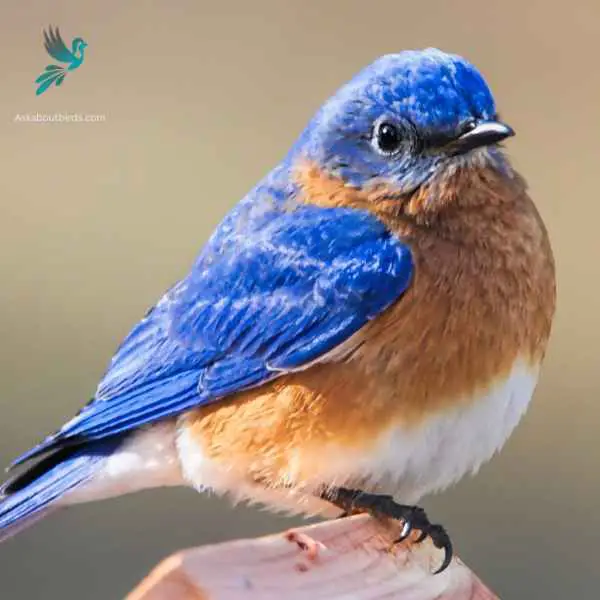
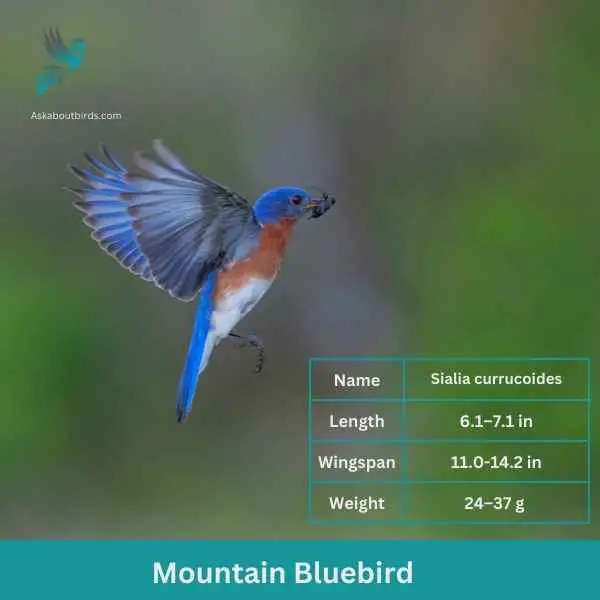
| Feature | Measurement |
|---|---|
| Scientific Name | Sialia currucoides |
| Length | 6.1–7.1 in |
| Wingspan | 11.0-14.2 in |
| Weight | 24–37 g |
The Mountain Bluebird is a small bird found in open grasslands and rocky mountains of North America. It is known for its stunning blue plumage, which is particularly vibrant in males. Females, on the other hand, have a more subdued blue coloration with hints of gray. These birds have slender bodies and a slightly curved bill, adapted for catching insects on the wing.
Mountain Bluebirds are insectivores, feeding primarily on insects such as beetles, grasshoppers, and spiders. They are skilled aerial hunters, capable of capturing their prey in mid-flight. During breeding season, these birds build their nests in tree cavities or man-made nest boxes, where females lay a clutch of eggs. The male bluebird actively participates in nest-building and provides food for the female during incubation.
Western Bluebird
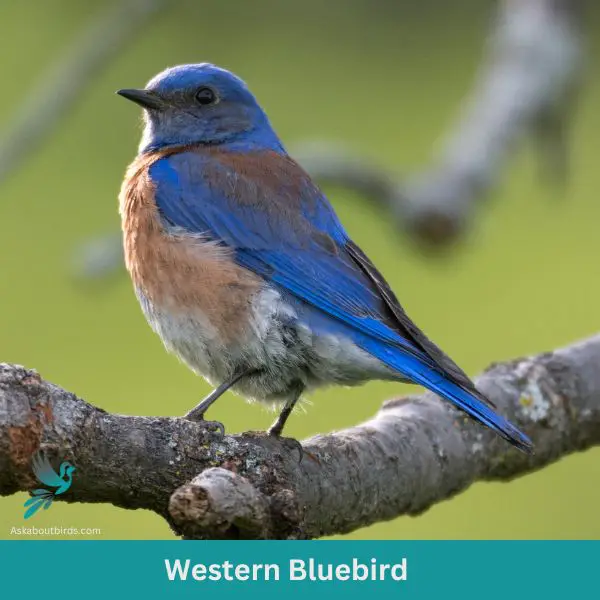
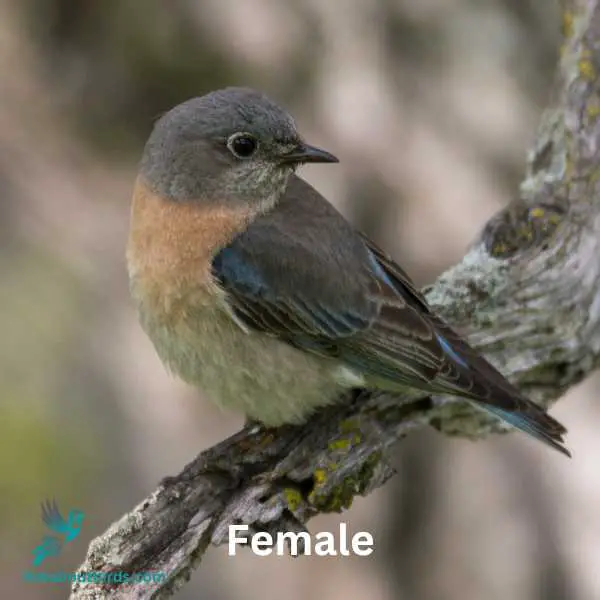
| Trait | Western Bluebird |
|---|---|
| Scientific Name | Sialia mexicana |
| Length | 5.5-7 inches |
| Wingspan | 11-13 inches |
| Weight | 0.8-1.1 ounces |
The Western Bluebird is a charismatic bird, appreciated for its vivid coloring and melodious song, commonly observed in open woodlands and meadows of the West.
Appearance: The male Western Bluebird sports a dark blue head, throat, wings, and tail with an orange breast and sides, transitioning into a grayish belly. Females are more muted, displaying grayish-blue wings and tail with a more subdued orange wash on the chest.
Diet: Western Bluebirds predominantly feed on insects, complemented by berries and fruits when available. They hunt by perching and then diving to the ground to capture their prey, and they’re also known to catch insects in mid-air.
Reproduction: These birds often utilize natural tree cavities or nest boxes for breeding. The female builds a loose nest inside and lays a clutch of 4-6 pale blue eggs.
Eastern Bluebird
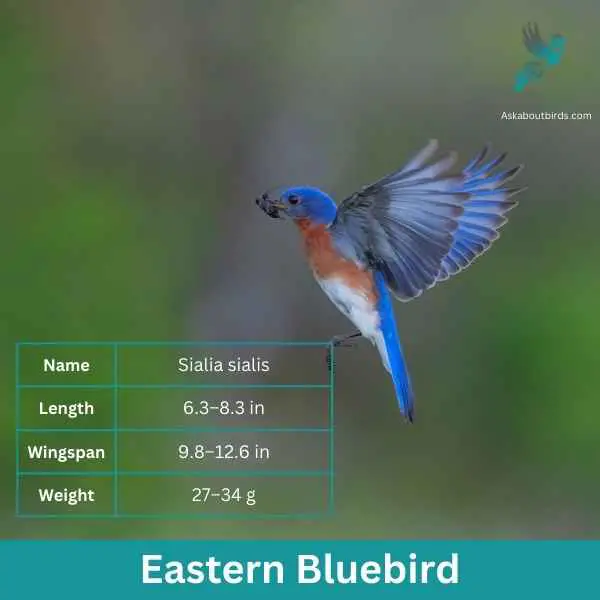
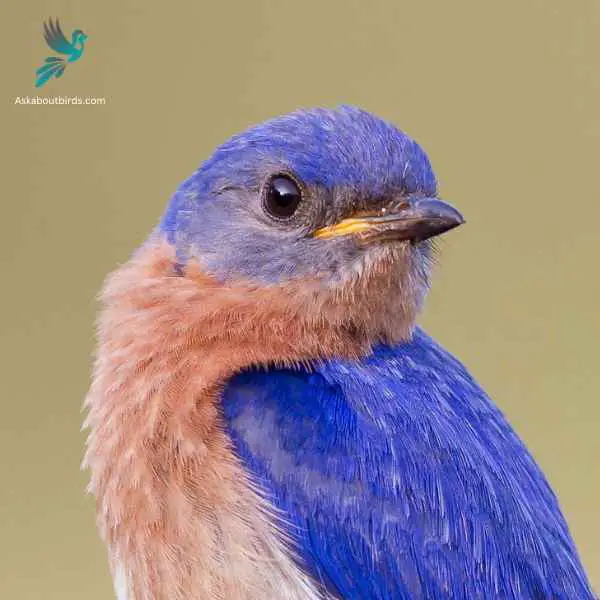
| Feature | Measurement |
|---|---|
| Scientific Name | Sialia sialis |
| Length | 6.3–8.3 in |
| Wingspan | 9.8–12.6 in |
| Weight | 27–34 g |
The Eastern Bluebird (Sialia sialis) is a small thrush found in open woodlands, farmlands, and orchards, and is recognized for its vibrant blue and red coloration. Male Eastern Bluebirds are dazzling with bright blue upperparts and a rusty or brick-red throat and breast, while females, though less colorful, still offer a similar pattern. The bird is native to North America and is commonly seen east of the Rockies, from Canada to the Gulf States and southeastern Arizona to Nicaragua.
Eastern Bluebirds feed on insects, wild fruit and berries. They have a gentle nature and are often seen perched alone or in small groups in the open, scanning the ground for prey. They are cavity nesters and will use old woodpecker holes or birdhouses if they are the right size.
Indigo Bunting


| Feature | Measurement |
|---|---|
| Scientific Name | Passerina cyanea |
| Length | 4.5–5.1 in |
| Wingspan | 7.1–9.1 in |
| Weight | 11.2–21.4 g |
The Indigo Bunting is a strikingly vibrant songbird, often hailed for its brilliant blue plumage and melodic song that graces woodlands and meadows during the warmer months.
Appearance: Males are renowned for their bright indigo blue feathers, which can appear darker in certain lights. Females and juveniles, on the other hand, are brown with subtle hints of blue on their wings and tail. The species lacks the vibrant streaking or spotting commonly found in many other songbirds.
Diet: Indigo Buntings primarily subsist on seeds, especially during non-breeding seasons. During the breeding season, they also consume a variety of insects such as beetles, caterpillars, and spiders, providing essential protein for their growing chicks.
Reproduction: Indigo Buntings build their nests close to the ground in shrubs or low tree branches. These nests, crafted meticulously with grasses and other plant materials, cradle clutches of typically 3 to 4 eggs. After hatching, the young are fed by both parents until they’re ready to fledge.
Lazuli Bunting
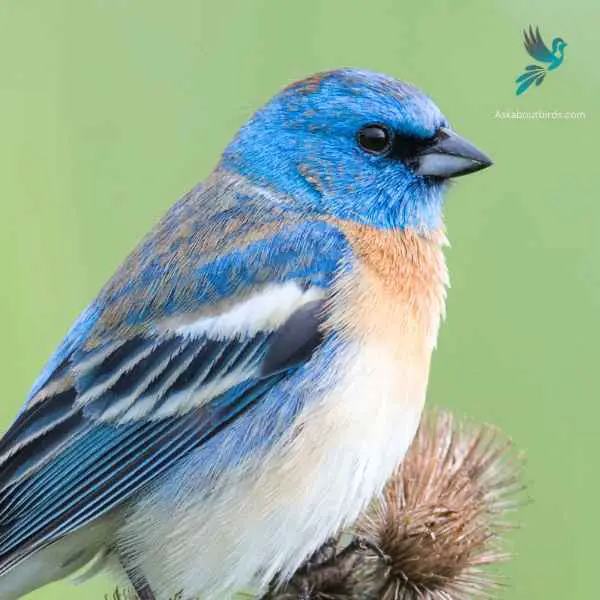

| Feature | Measurement |
|---|---|
| Scientific Name | Passerina amoena |
| Length | 5.1-5.9 in |
| Wingspan | 8.7 in |
| Weight | 13-18 g |
The Lazuli Bunting is a vibrant songbird recognized for its brilliant colors and melodious song, frequently seen in brushy areas and woodlands during the summer months.
Appearance: The male boasts a dazzling bright blue head and back, offset by a white belly and rust-orange breast. Females and immature birds present a more muted brownish hue overall, with a hint of blue on the wings and tail.
Diet: Lazuli Buntings primarily feed on seeds, but during the breeding season, they’ll also consume insects. Their strong, conical beaks are perfectly adapted for seed-cracking.
Reproduction: The female Lazuli Bunting constructs a cup-shaped nest using grasses, twigs, and other fine materials, often placing it in a shrub or low tree. She typically lays a clutch of 3-4 pale blue or white eggs.
Blue Grosbeak
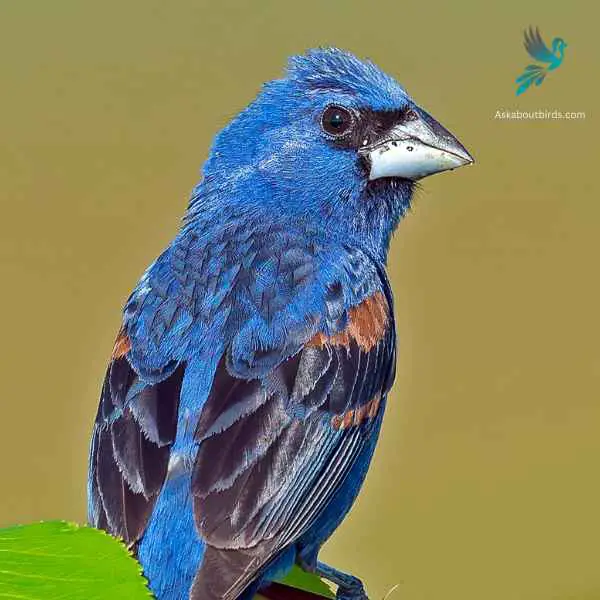

| Feature | Measurement |
|---|---|
| Scientific Name | Passerina caerulea |
| Length | 5.5 to 7.5 in |
| Wingspan | 10 to 11 in |
| Weight | 26 to 31.5 g |
The Blue Grosbeak is a medium-sized songbird found in North and Central America. The male Blue Grosbeak displays stunning plumage with deep blue feathers on its body and head, while the female has more subdued brownish tones. Both sexes have a thick, conical bill, which gives them their name “grosbeak,” meaning large beak.
These birds prefer open habitats such as grasslands, brushy areas, and woodland edges. Blue Grosbeaks are known for their melodious songs, which consist of a series of rich and varied notes. They primarily feed on seeds and insects, using their strong beaks to crack open seeds and forage on the ground or in low vegetation.
Blue Jay

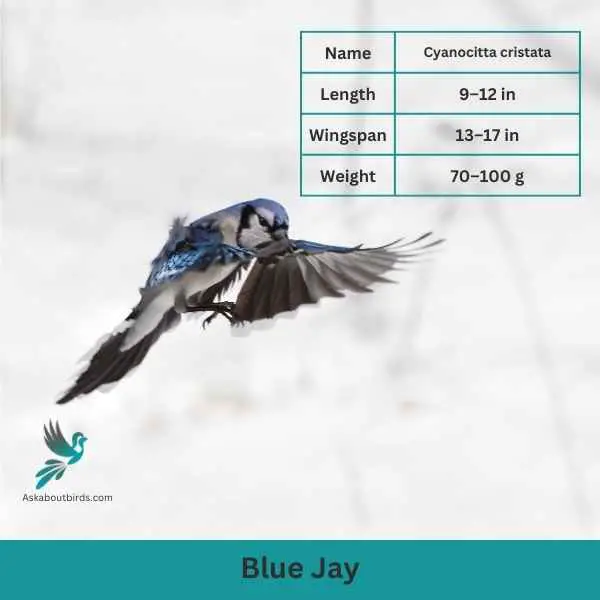
| Feature | Measurement |
|---|---|
| Scientific Name | Cyanocitta cristata |
| Length | 9–12 in |
| Wingspan | 13–17 in |
| Weight | 70–100 g |
The Blue Jay is a vibrant and easily recognized bird, known for its intelligence, distinctive calls, and bold behavior, commonly found throughout the eastern and central United States.
Appearance: The Blue Jay sports a striking blue upper body with white and black markings. Its face has a pronounced white patch with a black necklace that runs across the throat and around the head. The bird also features a pronounced blue crest, which can be raised or lowered, and its wings and tail are brightly colored with black bars and white tips.
Diet: Blue Jays are omnivores. Their diet consists primarily of seeds, nuts, especially acorns, fruits, and small insects. They’ve also been known to eat eggs or nestlings of other birds occasionally. Blue Jays often store food items in caches to eat later.
Reproduction: Blue Jays are monogamous birds that form long-lasting pair bonds. They typically build their nests in trees or large shrubs, constructing them from twigs, grass, and sometimes using mud as a binder. The female lays a clutch of 3 to 6 eggs, which are pale blue or sometimes white with brown speckles.
Steller’s Jay
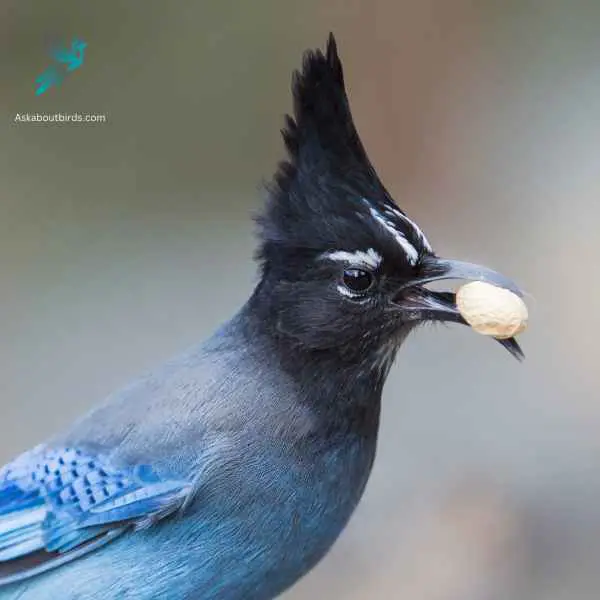

| Feature | Measurement |
|---|---|
| Scientific Name | Cyanocitta stelleri |
| Length | 12–13 in |
| Wingspan | 45 to 48 cm |
| Weight | 45 to 48 cm |
The Steller’s Jay is a charismatic and easily recognizable bird found mainly in the coniferous forests of the western North America, known for its bold behavior and loud, varied calls.
Appearance: The Steller’s Jay has a striking color contrast with a deep blue body and wings and a blackish head and upper body. One of its most distinguishing features is the tall, dark crest on its head, which can be raised or lowered depending on the bird’s mood. Its eyes are dark and its beak is strong and black.
Diet: The Steller’s Jay is omnivorous. It feeds on a wide range of items, from seeds, nuts, and berries to insects and small animals. It’s also known to raid campsites and picnics, often scavenging for human food.
Reproduction: Steller’s Jays form monogamous pairs that often remain together for several years. They typically build their nests in coniferous trees, made from twigs, moss, and other plant materials. The female lays a clutch of 2 to 6 eggs, which are usually pale green or blue with brown spots.
Pinyon Jay

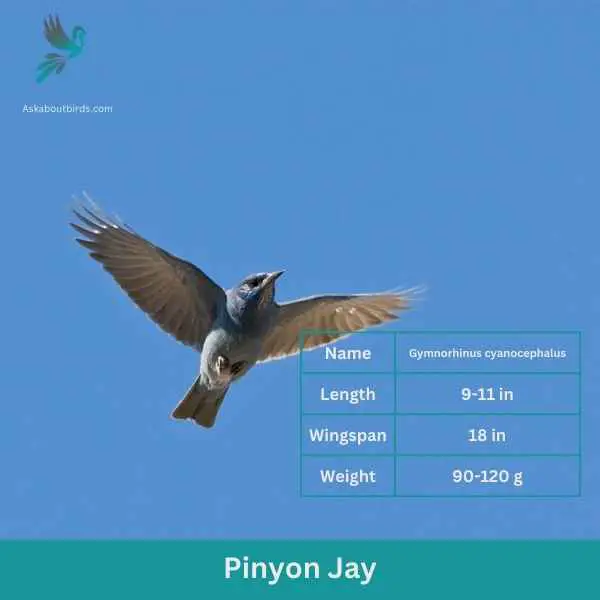
| Feature | Measurement |
|---|---|
| Scientific Name | Gymnorhinus cyanocephalus |
| Length | 9-11 in |
| Wingspan | 18 in |
| Weight | 90-120 g |
The Pinyon Jay is a small, stout bird found in the western United States and Mexico. It has a distinctive blue-gray coloration with a black head and neck. The bird is well adapted to living in dry, arid habitats with sparse vegetation and can often be found in pinyon pine and juniper forests. The Pinyon Jay is known for its communal behavior, living in groups of up to several hundred birds during the non-breeding season. During breeding season, they form monogamous pairs and build nests in juniper trees.
The Pinyon Jay’s diet consists mainly of pinyon pine seeds, but they also eat insects, berries, and other seeds. They have a unique way of storing food for later, using their expandable throat pouch to carry up to 50 seeds at once. The Pinyon Jay is an important seed disperser for pinyon pine and juniper trees, and is a vital part of the ecosystem in its range. However, habitat loss and fragmentation due to human activities, such as logging and oil and gas development, have led to declines in Pinyon Jay populations in recent years.
Woodhouse’s Scrub-Jay
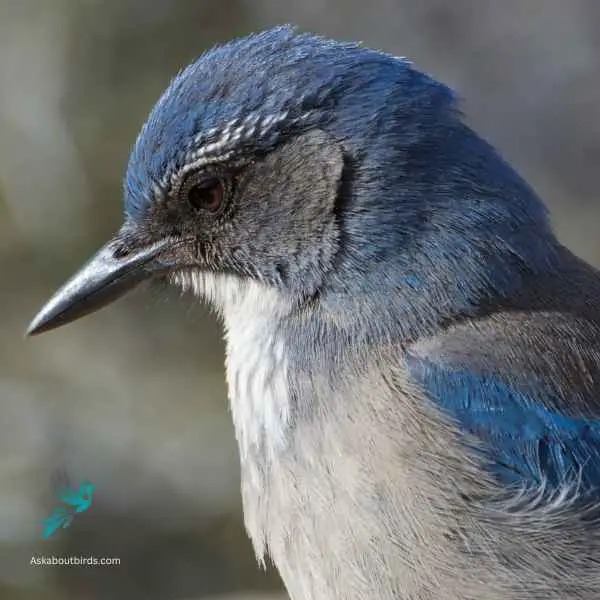

| Feature | Measurement |
|---|---|
| Scientific Name | Aphelocoma woodhouseii |
| Length | 11–12 in |
| Wingspan | 15 in |
| Weight | 80 g |
Woodhouse’s Scrub-Jay is a medium-sized bird that is found in the western part of North America. It has a blue-gray head, wings, and tail, with a brownish-gray back and a white belly. The bird’s bill is black and its eyes are dark. Woodhouse’s Scrub-Jay is known for its loud and harsh calls, which it uses to communicate with other birds in its flock.
This bird is commonly found in arid and semi-arid habitats, such as deserts, scrublands, and oak woodlands. It is an omnivore, feeding on a variety of insects, seeds, fruits, and small animals. Woodhouse’s Scrub-Jay is known for its intelligence and ability to cache food for later use. It is also a territorial bird, defending its territory from other birds and animals. Despite being a common bird, Woodhouse’s Scrub-Jay is threatened by habitat loss and fragmentation, making conservation efforts important for its survival.
Tree Swallow
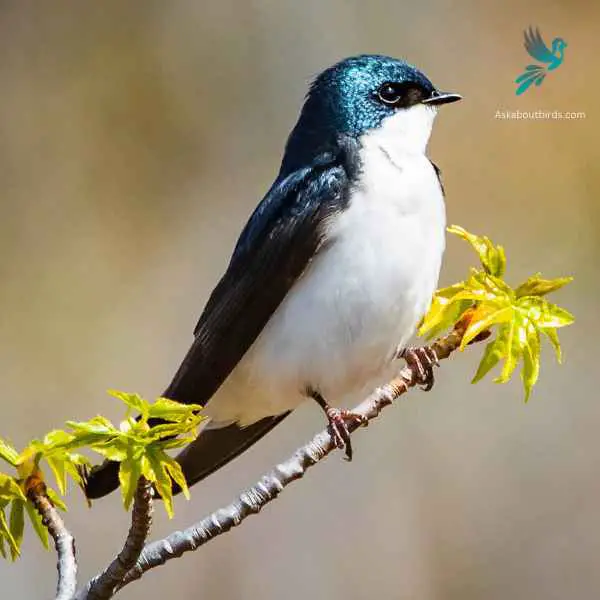
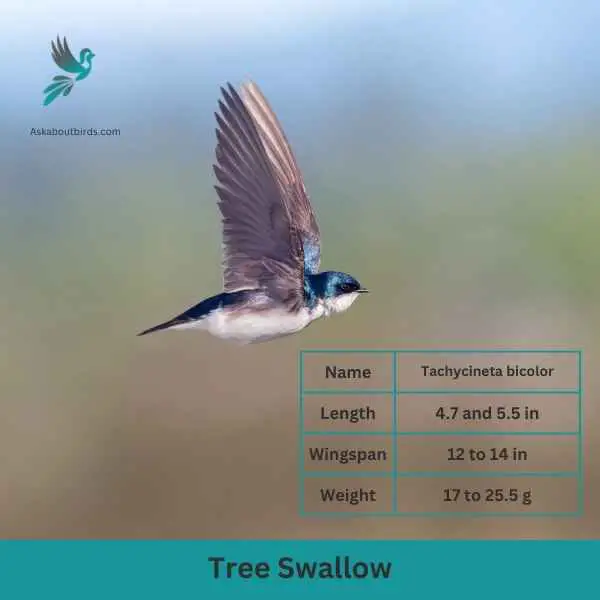
| Feature | Measurement |
|---|---|
| Scientific Name | Tachycineta bicolor |
| Length | 4.7 and 5.5 in |
| Wingspan | 12 to 14 in |
| Weight | 17 to 25.5 g |
The Tree Swallow is a graceful and agile bird, best recognized for its iridescent blue-green upperparts and sweeping flight patterns over open fields and water.
Appearance: The Tree Swallow is sleek with a streamlined body. The upperparts shine with a blue-green iridescence while the underparts are white. They possess long, pointed wings and a slightly forked tail, aiding in their agile flight.
Diet: Tree Swallows primarily feed on flying insects, skillfully catching them mid-air. During colder months when insects are scarce, they can switch to a diet of berries, particularly those of the bayberry, which other birds might find hard to digest.
Reproduction: Tree Swallows are cavity-nesters, typically choosing natural holes in trees or using bird boxes. They line their nests with feathers, creating a soft environment for the eggs. The female will lay a clutch of 4 to 7 white eggs.
Barn Swallow


| Feature | Measurement |
|---|---|
| Scientific Name | Hirundo rustica |
| Length | 6.5–7.5 in |
| Wingspan | 12.5–13.5 in |
| Weight | 16–22 g |
The Barn Swallow is a sleek, agile bird renowned for its graceful flight patterns and iconic forked tail, often seen darting over fields and water bodies in search of flying insects.
Appearance: Barn Swallows have deep blue, almost iridescent, upperparts and a rufous to tawny underbelly. Their distinctively forked tail and long wings give them a streamlined look. Both males and females have a similar appearance, though males often exhibit slightly brighter colors and a deeper fork in the tail.
Diet: Barn Swallows feed primarily on flying insects, which they catch in mid-air during their agile and acrobatic flights. Their diet includes flies, beetles, moths, and other small flying insects.
Reproduction: Barn Swallows are known for building their mud nests on man-made structures, particularly barns, bridges, and eaves. The nest is cup-shaped and made from mud pellets, often lined with feathers. The female lays a clutch of 4 to 6 eggs.
Violet-green Swallow
| Scientific Name | Length | Wingspan | Weight |
|---|---|---|---|
| Tachycineta thalassina | 4.7-5.1 in (12-13 cm) | 11.8-13.4 in (30-34 cm) | 0.4-0.6 oz (11-17 g) |
The Violet-green Swallow is a small, agile bird known for its vibrant plumage and swift flight.
Appearance: This swallow has a glossy green back and head, with white underparts extending behind the eye and onto the sides of the rump. The wings and tail are dark, with white patches on the inner tail feathers. Males typically have brighter and more extensive white markings than females.
Diet: Violet-green Swallows primarily feed on insects, which they catch in flight. Their diet consists of a variety of flying insects including flies, wasps, and beetles.
Reproduction: They usually nest in natural or artificial cavities, often selecting old woodpecker holes or nest boxes. The female lays a clutch of 4 to 6 white eggs, which are incubated by both parents for about 13 to 14 days. After hatching, the chicks are fed by both parents and fledge in about 23 to 24 days.
Belted Kingfisher

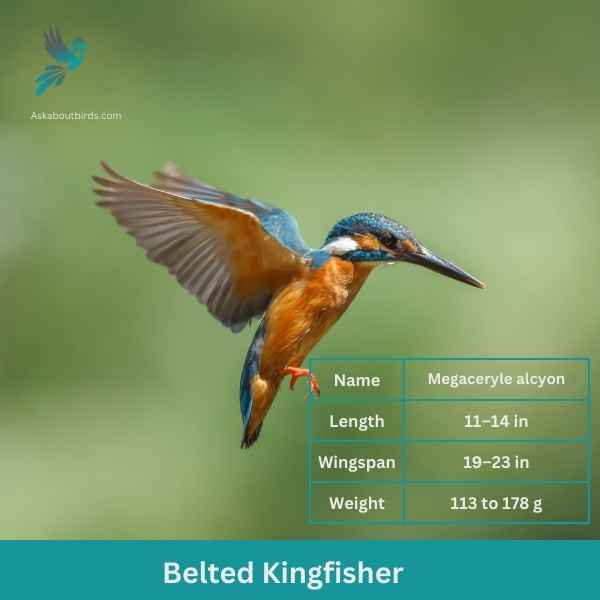
| Feature | Measurement |
|---|---|
| Scientific Name | Megaceryle alcyon |
| Length | 11–14 in |
| Wingspan | 19–23 in |
| Weight | 113 to 178 g |
The Belted Kingfisher is a distinctive and easily recognizable bird, frequently observed near water bodies, where it can be seen diving headfirst to catch prey.
Appearance: Sporting a prominent crest, the Belted Kingfisher has a slate blue-gray upper body and white underparts. Males possess a single blue band across their white chests, while females have an additional rufous band, making them one of the few bird species where females are more brightly colored than males. Their bill is long, sharp, and dagger-like.
Diet: As expert fishers, Belted Kingfishers mainly prey on small fish, but they’ll also consume crustaceans, insects, and amphibians. They’re known for their hunting tactic of hovering over water, spotting their prey, and then diving swiftly to snatch it.
Reproduction: Belted Kingfishers nest in burrows which they excavate in sandy or earthen banks, usually adjacent to water. The tunnel can be anywhere from 3 to 6 feet long, ending in a chamber. Within this chamber, the female lays a clutch of 5 to 8 white eggs.
Where to Spot Colorado’s Blue Birds
Colorado offers a host of opportunities for bird watchers, and there are several hotspots that are particularly known for their diversity of bird species, including the stunning blue birds.
- Rocky Mountain National Park: This national park is a haven for birdwatchers, with over 280 recorded bird species. Its varying elevations and habitats support a diverse array of birds, making it a must-visit for any bird enthusiast.
- Barr Lake State Park: Located northeast of Denver, Barr Lake State Park is a designated Bird Area of Global Importance. The park’s shallow lake and surrounding habitats attract a variety of waterfowl and shorebirds, making it a prime location for bird watching.
- San Luis Valley: The San Luis Valley is a high-altitude desert basin that is home to a wide variety of bird species. The wetlands and sand dunes of the region provide unique habitats that attract numerous migratory and resident bird species.
- Pawnee National Grassland: Located in the eastern part of the state, the Pawnee National Grassland is home to a variety of grassland bird species. The wide open spaces and minimal tree coverage make it easier to spot birds in their natural habitat.
- Mesa Verde National Park: This national park, known for its ancient Puebloan cliff dwellings, also offers excellent birdwatching opportunities. The park’s varied habitats support a wide range of bird species, from raptors to songbirds.
| State’s Blue Birds | Top Spots for Blue Birds |
|---|---|
| Wyoming’s Blue Birds | 1. Yellowstone National Park 2. Grand Teton National Park 3. Medicine Bow National Forest |
| Nebraska’s Blue Birds | 1. Fontenelle Forest 2. Platte River State Park 3. Indian Cave State Park |
| Kansas’s Blue Birds | 1. Cheyenne Bottoms Wildlife Area 2. Quivira National Wildlife Refuge 3. Kansas Wetlands Education Center |
| Oklahoma’s Blue Birds | 1. Wichita Mountains Wildlife Refuge 2. Sequoyah National Wildlife Refuge 3. Oxley Nature Center |
| New Mexico’s Blue Birds | 1. Bosque del Apache National Wildlife Refuge 2. Valles Caldera National Preserve 3. Bandelier National Monument |
| Utah’s Blue Birds | 1. Bear River Migratory Bird Refuge 2. Antelope Island State Park 3. Fish Springs National Wildlife Refuge |
FAQs on Blue Bird Species Found in Colorado
What distinguishes Blue-gray Gnatcatchers from other blue-colored birds?
Blue-gray Gnatcatchers are small, active birds with a light blue-gray plumage and a prominent white eye ring. Unlike other blue-colored birds, they have a long tail with white outer feathers and a thin bill. They are mostly found in open woodlands, forest edges, and shrubby areas across North and South America. Their diet primarily consists of insects, and they are known to hover while foraging, which is a distinctive behavior among blue-colored birds.
What are the distinctive features of a Western Bluebird?
The Western Bluebird is a medium-sized bird with a dark blue body, a rusty red chest, and a light gray belly. It is one of the three bluebird species found in North America. The males have a bright, vibrant blue color on their head, wings, and tail, while the females have a more subdued, grayish-blue color with brownish tones. They are commonly found in open areas with scattered trees, mountainous regions, and evergreen forests in the western half of North America. They eat insects, small fruits, and berries.
What are the key characteristics of a Black-throated Blue Warbler?
The Black-throated Blue Warbler is a small bird with a strikingly dark blue body, a black throat, and white belly. The contrast between the black throat, white underparts, and brilliant blue upperparts makes this bird quite distinctive. The females, however, are more subdued in color, with olive-brown markings replacing the blue and black of the males. This bird is found in the eastern half of North America during the breeding season and migrates to the Caribbean and Central and South America for the winter.
Where can I find Blue Grosbeak?
The Blue Grosbeak, a brilliant blue passerine bird with a large bill and dull blue wings with chestnut wing bars, is found across the southern United States, Central America, and northern South America. During the breeding season, they are mostly found in the southern United States and migrate southward in winter. Their preferred habitats include brushy areas, woodland edges, and semi-open country with scattered trees. Installing bird feeders with sunflower seeds in your backyard can attract this vibrant bird.

